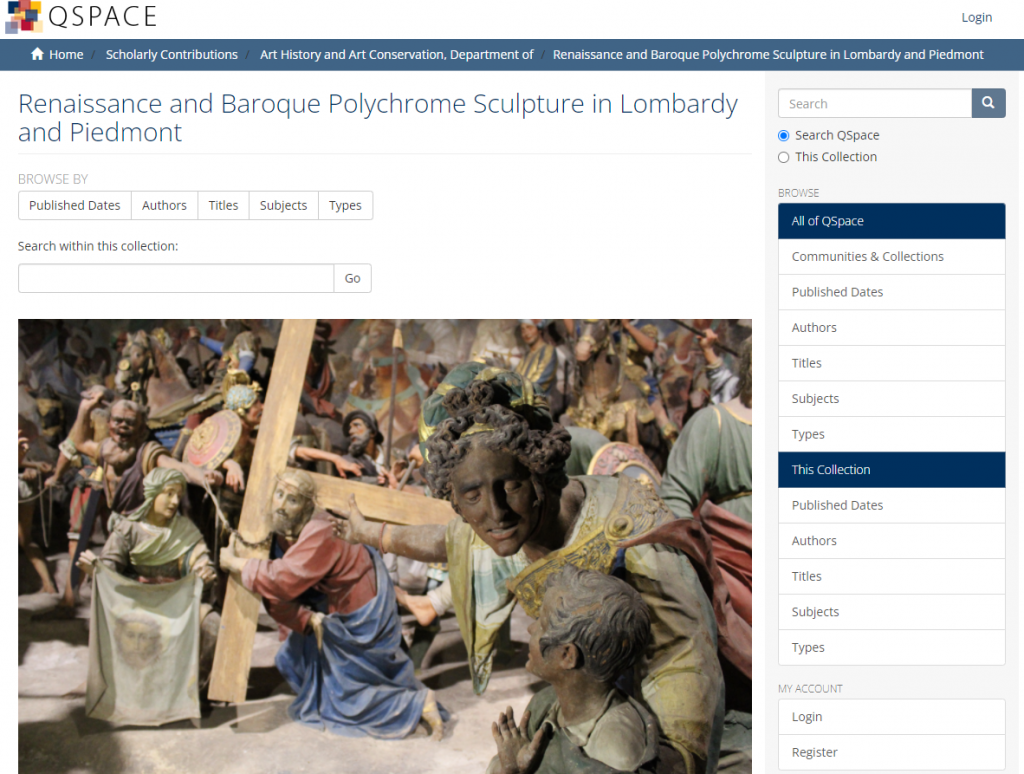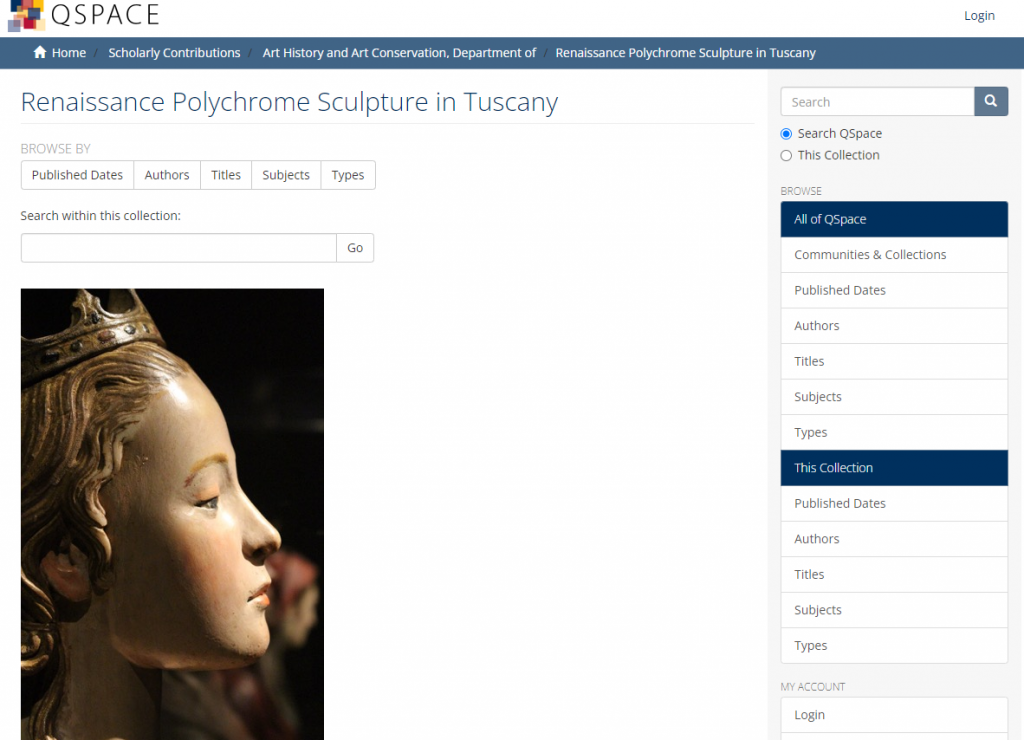
http://qspace.library.queensu.ca/handle/1974/29070
The Renaissance art in Puglia and Basilicata is much less known than the heavily touristed and much studied sites in central Italy. Life-sized painted sculptures, many carved out of local stone, inhabit rough-walled cave churches and elaborate classically inspired mausolea. An elegantly attired angel hacks repeatedly at a cowering dragon, a saint looks unperturbed as her fingers sink into a lion’s mouth, a mother grins toothily as she cuddles her baby, and shepherds blow into bagpipes while stone sheep graze nearby. Artists placed holy narratives in spaces like the rocky landscape around them, and dressed sacred personages in local dress, while at the same time harkening back to an ancient past shrouded in myth and mystery. The art is both distinctively local and cosmopolitan, drawing upon influences from around the Adriatic and beyond. This open access database offers high-resolution images of and information about (with a catalog entry and bibliography for each work) over 100 objects, along with an interactive digital map. Approximately 1,000 high-resolution photographs can be downloaded and used free of charge for research, teaching, and publication. This database was created by Claire Litt and Una D’Elia (Queen’s University).
In addition to supporting scholarship on this understudied region by offering open access photographs, this database is a rich resource for teaching, as students can carry out research, curate, and publish their own virtual exhibitions using the database. (Links to undergraduate and graduate student exhibitions are provided on the homepage.)


